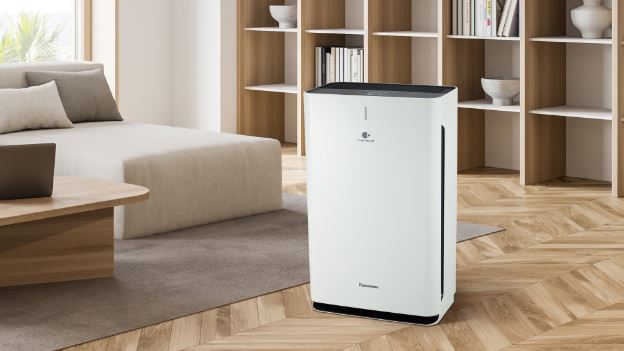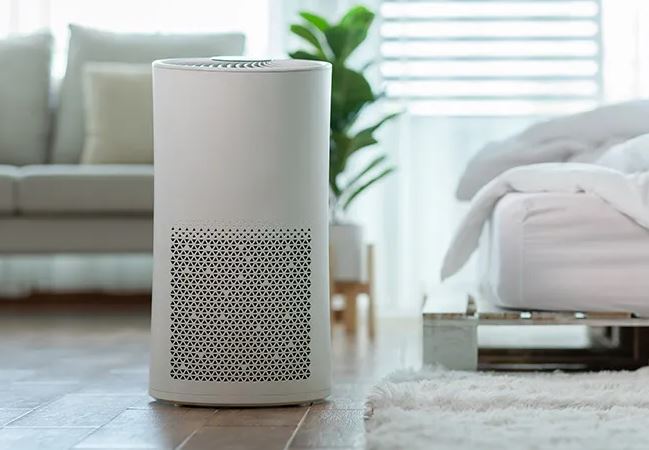Best Air Purifiers for Smoke Removal: Clearing the Air After Fires
Wiki Article
In today's health-focused society, the air quality indoors and out has taken center stage for many people. With growing concerns over air pollution and a better understanding of the influence of indoor air quality on overall health on our health, it's no surprise that the air purifier market is booming.
Air purifiers are appliances that eliminate airborne contaminants in a given area, improving indoor air quality. They are particularly beneficial for those with allergies, asthma, or respiratory concerns as they can significantly lower the presence of allergens, pollutants, and irritants in the air. Even healthy individuals can benefit from air purifiers, as they give added assurance and protect against airborne pathogens.
This guide will explore in detail the intriguing world of air purification, examining their advantages, the variety of options on the market, key considerations when choosing a purifier, and how to get the most out of your device. By the end, you should have a solid comprehension of air purifiers and be able to decide confidently about whether investing in one is the best option for you and your family.

Unraveling Indoor Air Contaminants and Their Effects on Well-being
To understand why air purifiers are essential, it's vital to understand the variety of contaminants they address and the possible effects of prolonged exposure.
Indoor air pollutants can be generally classified into three main types:
- Particulate Matter: This includes solid particles and liquid droplets present in the air. Examples include pollen, smoke, dust, pet dander, and mold spores, to name a few. Particulate matter can lead to respiratory complications and set off allergic responses.
- VOCs: A Concern for Indoor Air: VOCs are gases emitted from various solids or liquids. Sources of VOCs include paints, cleaning products, aerosol sprays, and pesticides. Exposure to VOCs can lead to eye, nose, and throat irritation, headaches, and nausea.
- Understanding Biological Contaminants: These include various microorganisms, including bacteria, viruses, mold, and mildew. They can cause a range of health issues, from allergy symptoms to more serious health risks.
The impact of these contaminants on human health can greatly vary. For those suffering from respiratory ailments or weakened immune systems, exposure to indoor air pollutants can lead to severe complications. For those in good health, chronic exposure to certain pollutants can increase the risk of respiratory conditions and other health concerns over time.

How Air Purifiers Work
Air purifiers use a variety of physical and chemical processes to effectively eliminate contaminants. Understanding the basic mechanisms employed by purifiers will help you understand their efficiency and the different types available on the market.
Here are the core processes and cutting-edge technologies used in air purifiers:
- Mechanical Filtration: This is the most widely used approach used in air purifiers. It involves using filters to trap particles as air is passed through the filtration system. The filters can be made from various materials, each designed to target specific particle sizes and types. For example:
- Pre-filters: These are usually the initial barrier, catching larger particles like hair and dust.
- HEPA Filtration: Unparalleled Performance: HEPA filters are remarkably proficient at trapping tiny particles, including dust mites, pollen, bacteria, and viruses. To be labeled a bona fide HEPA filter, it must capture at least 99.97% of particles as small as 0.3 microns.
- carbon filtration: These filters are designed to reduce VOCs and odors.
- Ionizers: Charging Ahead: Ionizers use electricity to create negatively charged ions, which attach themselves to particles in the air. The charged particles are drawn to nearby surfaces or the purifier itself.
- Ozone: A Powerful Purifier: Some air purifiers use ozone as a potent disinfectant to destroy contaminants. While effective, ozone is a respiratory irritant so these types of purifiers should be used with moderation and in well-ventilated areas.
- UV Light: A Radiant Solution: UV light can be used to effectively eliminate bacteria, viruses, and mold. UV light is commonly paired with filtration to trap particles, and UV light provides an extra layer of protection against biological hazards.
Selecting the Perfect Purifier
With a plethora of options available, selecting the ideal air purification system can be a challenging endeavor. It's important to consider several factors to ensure you make the correct choice for your particular needs and room size.
Here are some essential factors to weigh:
- Room Size: Air purifiers are typically rated according to room size, so it's important to choose a model that can adequately cater to the room size. Most purifiers will list a maximum room size or a Clean Air Delivery Rate (CADR), which indicates the rate at which it can deliver clean air.
- Type of Contaminants: Identify the types of pollutants you want to target. If you suffer from allergies, look for a purifier with a HEPA filter. For reducing unwanted smells, consider a model with a carbon filter. If you're concerned about viral and bacterial threats, a purifier with UV light technology might be best.
- Quiet Operation: Air purifiers can produce a range of noise outputs, so if you plan to use it in a bedroom or quiet space, look for models with a sleep mode or quiet setting.
- Maintaining Performance: Consider the long-term expenses and upkeep of the purifier. HEPA filtration systems may need periodic replacement, depending on use and environmental factors. Factor in the cost of replacement filters when making your choice.
- Smart Innovations: Many purifiers offer innovative smart capabilities like air quality sensors, automatic modes, and Wi-Fi connectivity, allowing remote control and monitoring. These features can improve your purifier's performance and ease of use.
Unlocking the Full Potential of Your Air Purifier
Once you've invested in an air purifier and set it up, there are several things you can do to ensure it operates at maximum efficiency and delivers the optimal results:
- Strategic Positioning: Position your purifier in an open area, away from walls and furniture, to ensure effective airflow. Avoid placing it near external openings as drafts can impact its efficiency.
- Round-the-clock Operation: For the best results, it's recommended to run your purifier regularly. Many models have automatic or low-power settings that adapt to the air quality, so you can maintain fresh air without excessive energy costs.
- Filter Maintenance: Regularly follow the manufacturer's filter replacement guidelines. Over time, filters become filled with trapped particles, impacting performance. Mark the date of replacement on your calendar so you don't forget.
- Minimize Indoor Pollutants: Alongside using an air purifier, take steps to minimize indoor air pollutants. This could include regularly vacuuming and dusting, using natural cleaning products, and minimizing the use of strong chemicals or aerosols. Report this wiki page